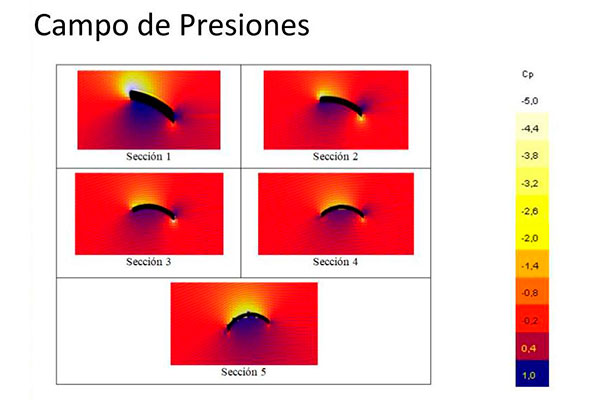Resumen
Uno de los aspectos más importantes del diseño de un aerogenerador que emplea perfiles alares es analizar el ángulo óptimo de ataque y su relación con los coeficientes de sustentación y arrastre (Cl - Lift y Cd - Drag), de modo de optimizar el rendimiento del perfil empleado en el aerogenerador para una velocidad del viento dada. En este trabajo se estudia esta relación en un aerogenerador de baja potencia instalado en el Campus de la Universidad Nacional de Tres de Febrero (UNTREF), con el fin de optimizar su rendimiento. Los álabes fueron construidos a partir de retazos de tubos de polietileno de alta densidad, por lo que el perfil aerodinámico no se encuentra normado. Debido a la naturaleza del material con que se construyeron, el perfil obtenido no es constante a lo largo de los mismos. Por este motivo, se analizaron 5 secciones del perfil mediante el software Javafoil, tomados en forma equidistante a lo largo del álabe y se obtuvo la variación de la relación entre los coeficientes de sustentación y arrastre respecto al ángulo de ataque para cada uno de los mismos, analizado para la velocidad del viento de la zona. Se encontró que con un ángulo de ataque de 11° es posible encontrar la mayor fuerza de sustentación con el menor arrastre, de modo tal que la fuerza resultante obtenida será aquella que permita generar la mayor potencia. En forma complementaria, este método permite evaluar perfiles alares no estandarizados, como el utilizado para el aerogenerador instalado en la UNTREF.

